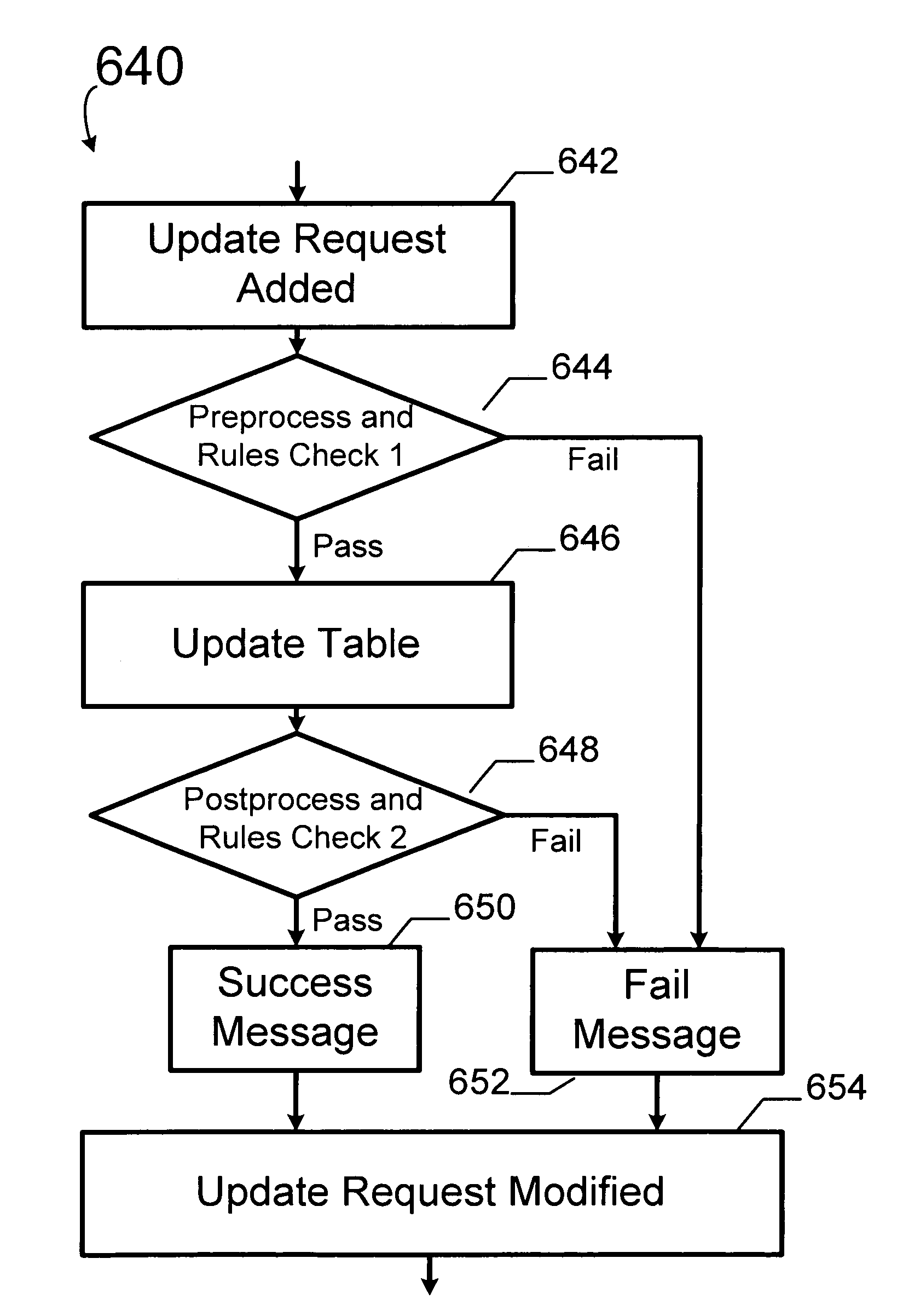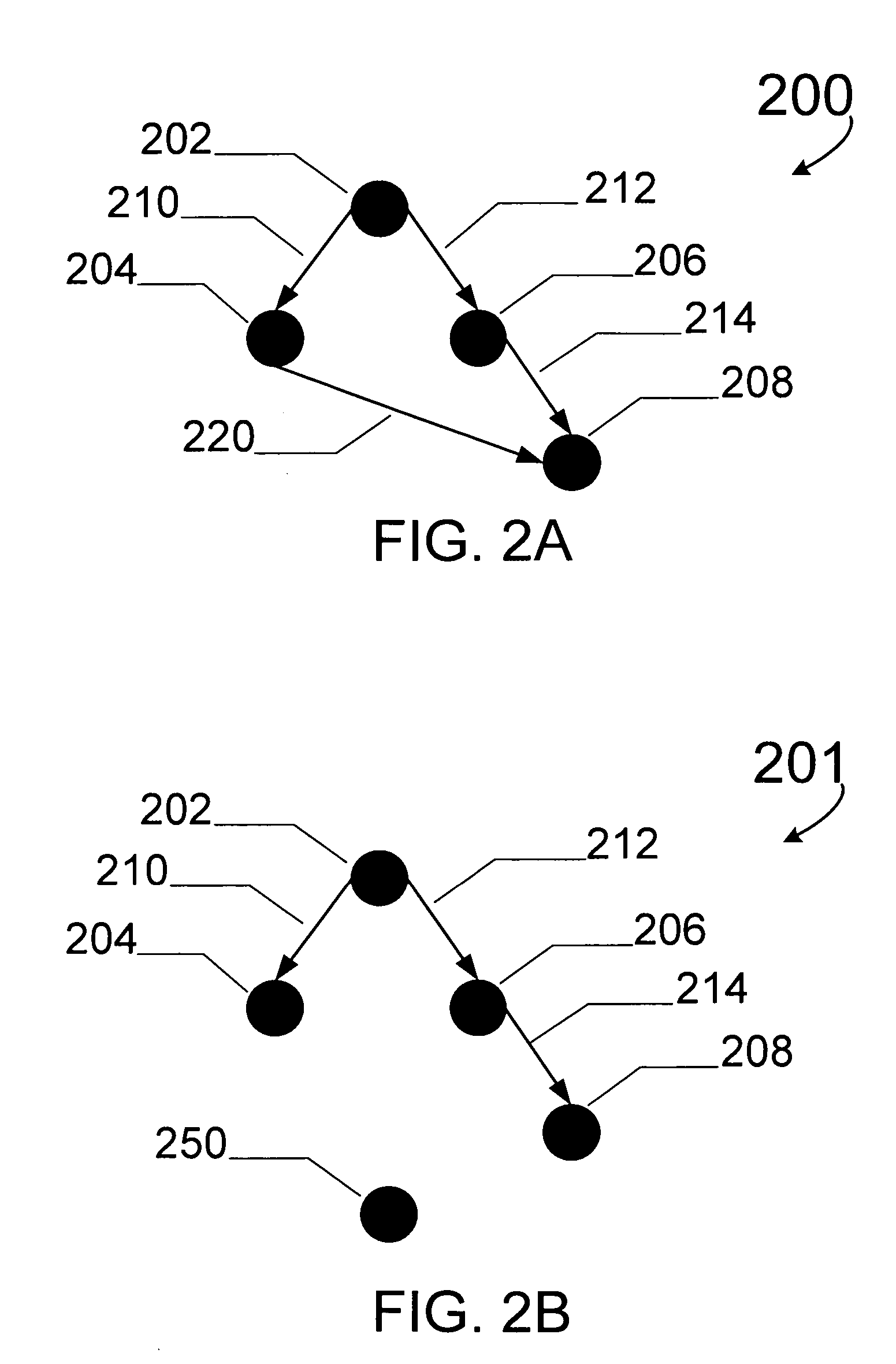Apparatus and method for defining relationships between component objects in a business intelligence system
omponent object technology, applied in the field of apparatus and method for defining relationships between component objects in a business intelligence system, can solve problems such as data structure problems, and loss of knowledge of relationship relationships
- Summary
- Abstract
- Description
- Claims
- Application Information
AI Technical Summary
Benefits of technology
Problems solved by technology
Method used
Image
Examples
Embodiment Construction
[0021] Embodiments of the present invention use graphs. A graph is a visual scheme that depicts relationships. FIG. 2A illustrates a type of graph commonly referred to as a directed acyclic graph 200. A graph may be defined by its vertices (e.g., 202, 204, 206, and 206, collectively denoted V), and its edges (e.g., 210, 212, 214, and 220, collectively denoted E). A graph G is then defined as G=(V, E). An individual vertex is labeled by its name and an individual edge is labeled by its name, e.g., 220, or the vertices at its termini, e.g., (204, 208). Graph 200 is a directed graph because the edges are defined with a direction. For example, edge (202, 206) is not the same as edge (206, 202). This can be denoted with arrows as edges, e.g., edge 212 of FIG. 2A. Graph 200 is considered connected because all vertices are coupled through direct connections or indirect connections. In embodiments of the present invention the graphs being manipulated are connected or unconnected. The graph ...
PUM
 Login to View More
Login to View More Abstract
Description
Claims
Application Information
 Login to View More
Login to View More - R&D
- Intellectual Property
- Life Sciences
- Materials
- Tech Scout
- Unparalleled Data Quality
- Higher Quality Content
- 60% Fewer Hallucinations
Browse by: Latest US Patents, China's latest patents, Technical Efficacy Thesaurus, Application Domain, Technology Topic, Popular Technical Reports.
© 2025 PatSnap. All rights reserved.Legal|Privacy policy|Modern Slavery Act Transparency Statement|Sitemap|About US| Contact US: help@patsnap.com



